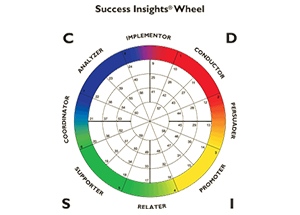Not Just Another Assessment
A Quick Introduction to the Benefits of DISC
By Whit Mitchell
I first used DISC was when I was working with Kodak, about 30 years ago. At the time it was a one-page, self-scoring concept that we used as an icebreaker to help people learn more about each other. I didn’t see it again for 15 years until I became a distributor with TTI. By then it was a robust and scientifically developed tool that gave insight into a variety of behavioral traits. When I began using the expanded version of DISC with clients, it greatly increased the degree of change and satisfaction within the leaders and teams I was working with. They were thrilled with the results, and so was I.
What is DISC? DISC is the universal language of observable behavior. Just observing people proves its validity. Every day we live in a wonderful laboratory where we can observe people and learn how to communicate and work together better. Scientific research has proven that people have universally similar characteristics in terms of how they act. By studying these characteristics, we can enhance communication—thereby increasing our understanding of each other.
DISC gives us insight into four observable behaviors:
D = Dominance – How you respond to problems and challenges.
I = Influence – How you influence others to your point of view.
S = Steadiness – How you respond to the pace of the environment.
C = Compliance – How you respond to rules set by others.
As I mentioned, one of the great insights from DISC is what it can do to help with team communication. I regularly conduct Dynamic Communication Workshops, which I’ve done every quarter for the past 20 years. After these workshops, people often take DISC back to their companies and use it with their teams. It gives great insight into the value of utilizing individual strengths, recognizing the differences in behavioral styles, and bringing these factors together to enhance teamwork.
Because I am known for behavioral coaching and this is a behavioral instrument, I use it in a number of arenas. I can sit down at the beginning of a coaching engagement and give people not only insights about themselves, but also a view of their behavioral blind spots.
In the 26 pages of the DISC talent profile there are 8-10 different areas that behaviors fit into. It’s a lot of very rich material that can help people have a better understanding of the impact—both good and bad—they can have on people.
Diversity in the workplace goes beyond age, race, sex, and ethnicity. DISC gives us the ability to recognize another aspect of diversity and to appreciate and value these variances. Behavioral differences always vary. Think of the people who make up your company. Some people like to work in quiet environments, others in noisy spaces with a lot of interaction. Some people need time to consider a new idea, and others are ready to jump on board immediately. People have different communication preferences, and enjoy certain aspects of their jobs more than others. DISC helps identify these differences and how to best manage the traits that come with diverse personalities.
A person’s observable behavior is the sum of all four factors: D, I, S, and C. By learning the DISC language and applying it to your company, you will find applications for team management, developing leadership skills, communication, sales and more.
To learn more about DISC or to book a DISC Workshop at your company, contact Whit at whit@price-associates.com.


